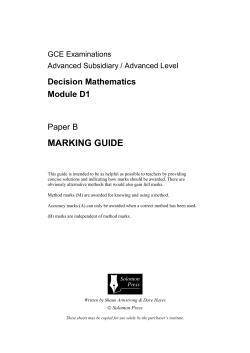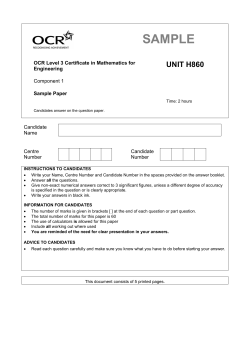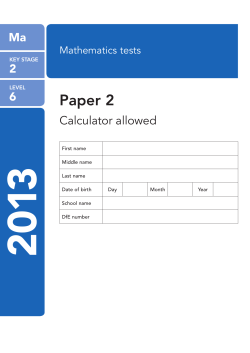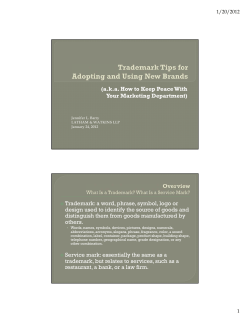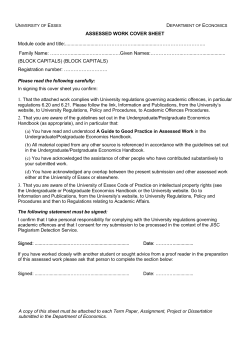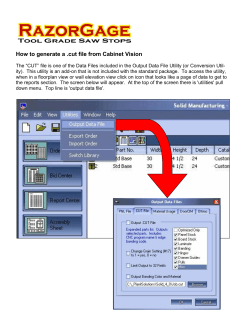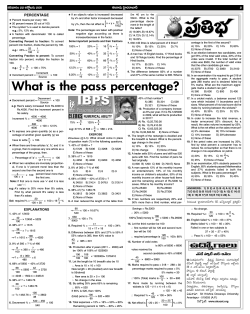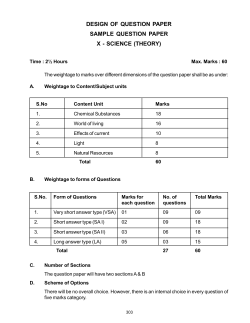
Chemistry 3211 Sample Midterm Test
Chemistry 3211 Sample Midterm Test Prof. C. Kozak This is a sample test composed of questions from various 3211 midterm tests over the past 5 years. • • • • • • Please read the whole paper before you begin. It consists of 7 pages including this one. The last page of the test is a periodic table. You may remove it from the booklet if you wish. Do not remove any other pages from the test. Please read all the questions carefully and answer all of the questions in the space provided. The bottom of Page 6 contains two Bonus Questions If you write on the back of any page, please indicate this. The total possible marks assigned to each question are given below. There is a total of 50 marks. You have 50 minutes to complete your test, therefore you have 1 minute per mark. Budget your time! – Good Luck! Name: Student Number: Question 1 Possible Marks 10 2-4 14 5 8 6, 7 9 8 9 Total 1 of 7 Marks Obtained /50 (1) For the following complexes, complete the missing information in the table: a) Cr(acac)3 Name: Structure: d-electron count = b) mer-Trihydridotris(triphenylphospine) iridium(III) Formula: Structure: d-electron count = c) (Ph3P)AuCl Name: Structure: d-electron count = d) Pentaamminedinitrogenruthenium(II) chloride Formula: Structure: d-electron count = e) trans-[Cr(en)2Cl2] Name: Structure: d-electron count = 2 Marks per complex, 10 Marks total 2 of 7 (2) i) Identify the absolute configuration of the molecule shown at left. [1 mark] N Cl N Cu N Cl N ii) Do you expect all four Cu-N bond distances to be identical? Explain your reasoning. [3 marks] (3) Explain why π-bonding in tetrahedral complexes is typically much weaker than in octahedral complexes. [4 marks] (4) Explain the following (2 marks each): i) The valence orbital energies in atoms decrease from left to right across a period. ii) Why does s-p mixing occur in the molecular orbital diagram of N2 but not O2? iii) What are two factors that effect coordination number? Briefly explain the effect of both. 3 of 7 (5) i) Draw an orbital energy diagram for CO, clearly labelling the σ, π, π* and σ* orbitals. [2 marks] ii) Explain the meaning of the term synergic or dative bonding. Illustrate your answer with an orbital overlap representation of the σ and π symmetry metal-CO interactions. Label the appropriate metal and ligand orbitals used (e.g. dxy, σ3, etc.). [3 marks] iii) What effect does strong metal-CO backbonding have on the strength of the C-O bond in the complex? Use your orbital energy diagram from part i) to support your answer. [2 marks] iv) What experimental/analytical technique(s) would you use to measure the strength of the CO bond? [1 mark] 4 of 7 (6) Starting from the d-orbital splitting pattern of a hypothetical octahedral metal complex, predict the d-orbital splitting pattern for a complex of trigonal bipyramidal geometry. Remember to assign your x, y and z-axes and explain your reasoning for any changes to the energies of the respective metal orbitals. [4 marks] (7) Strong π-acceptor ligands favour late transition metals in low oxidation states. i) Draw a complete MO diagram for an octahedral complex having only σ-bonding interactions, such as [Fe(H2O)6]2+. [3 marks] ii) How does replacing the water ligands with CO ligands generate a larger Δo? Show the effect on the MO diagram from part i). [2 marks] 5 of 7 (8) i) Define the Jahn-Teller effect. [2 marks] ii) For which electron configurations would the Jahn-Teller effect be possible? [2] iii) For which of the electron configurations you proposed in part ii) would the number of unpaired electrons, and thus the effective magnetic moment, be affected if it exhibited JahnTeller distortion? Show the resulting orbital splitting diagram resulting from elongation of the z-axis. [3 marks] iv) Identify the d-electron count commonly associated with square planar geometries. Explain why this geometry results in higher stability in the complex. [2 marks] BONUS Questions: i) What was the name of the chemist whose experiments at home led to catastrophic results for resident felines? In which city did he live? [+ 2 marks] ii) When Nickel was first discovered, what was its earliest use? [+ 1 mark] 6 of 7 7 of 7
© Copyright 2025




